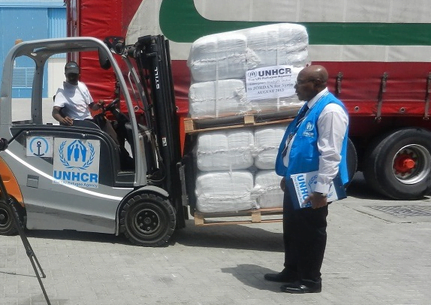It is a sobering snapshot of the humanitarian challenge facing the international community: according to data released last week, funding for relief assistance has reached unprecedented heights — but remains far short of fulfilling the needs of those adversely affected by armed conflict and climate change around the world. The implication is that aid agencies simply need more money to tend to current calamities. But as a recent report by Medecins Sans Frontieres makes clear, the primary obstacles to humanitarian programming are not material or financial. They are logistical and political.
From Somalia to Sudan and Sout
The first is demographic. Population growth and rapid urbanization in developing countries means that when violence erupts or a natural disaster hits, it exacerbates the vulnerability brought on by unplanned and misaligned growth, including poverty, crime, and disease. Second, greater mobility during periods of stability has translated into greater mobility during times of crisis. A record number of people have now been uprooted by armed conflict, and an increasing proportion of them are internally displaced. Unlike refugees, IDPs lack explicit international legal protection, and assisting them therefore depends on the cooperation of their own governments — often the very authorities responsible for the violence or instability that caused people to flee their homes in the first place.
These shifting displacement trends are a consequence of both the changing dynamics of conflict and the politics of asylum: while wars have become more localized, though still contagious, countries have tightened border controls to prevent people from becoming refugees. Syrians have been systematically denied entry into Jordan and Turkey, and authorities in Iraqi Kurdistan are restricting access to border crossings for civilians fleeing ISIS-held areas. The 100,000 Gaza residents that were ordered to leave their homes last week similarly have found nowhere else to go.
A third factor undermining the provision of humanitarian relief is that many needy populations are difficult to locate and track. An estimated 70 percent of Syrian refugees do not reside in camps, and a significant number have been doubly displaced — exiled from Syria to Iraq only to be uprooted by new violence. Potential beneficiaries blend into urban landscapes as easily as rebels blend into surrounding communities, and since the distribution of aid is meant to be impartial and non-discriminatory, it can be effectively siphoned off or used by local authorities for political purposes.
So what can be done? As the UN re-evaluates its peacekeeping apparatus, it should consider expanding the role of peacekeepers in aid delivery for IDPs.
At the same time, member states can pressure governments to open their borders and give refugees the legal right to work. Designated and accessible relief areas are critical for the efficient distribution of humanitarian supplies. More importantly, as demonstrated in a study released last month by the University of Oxford, refugee communities can be a boon to local economies. The Zaatari refugee camp in Jordan, for example, has become a working city. Donors can work with host governments to illuminate the potential benefits of refugee inflows, and provide the infrastructure support necessary to help exiled populations generate and maintain a viable economy.
Aid agencies should certainly not pull back from war zones. But with conflicts becoming more protracted — causing not only greater involuntary mobility but also involuntary immobility — rather than concentrating limited resources on getting supplies in, it may be more productive for humanitarian actors to focus on getting people out, while helping them build self-sustaining communities.
